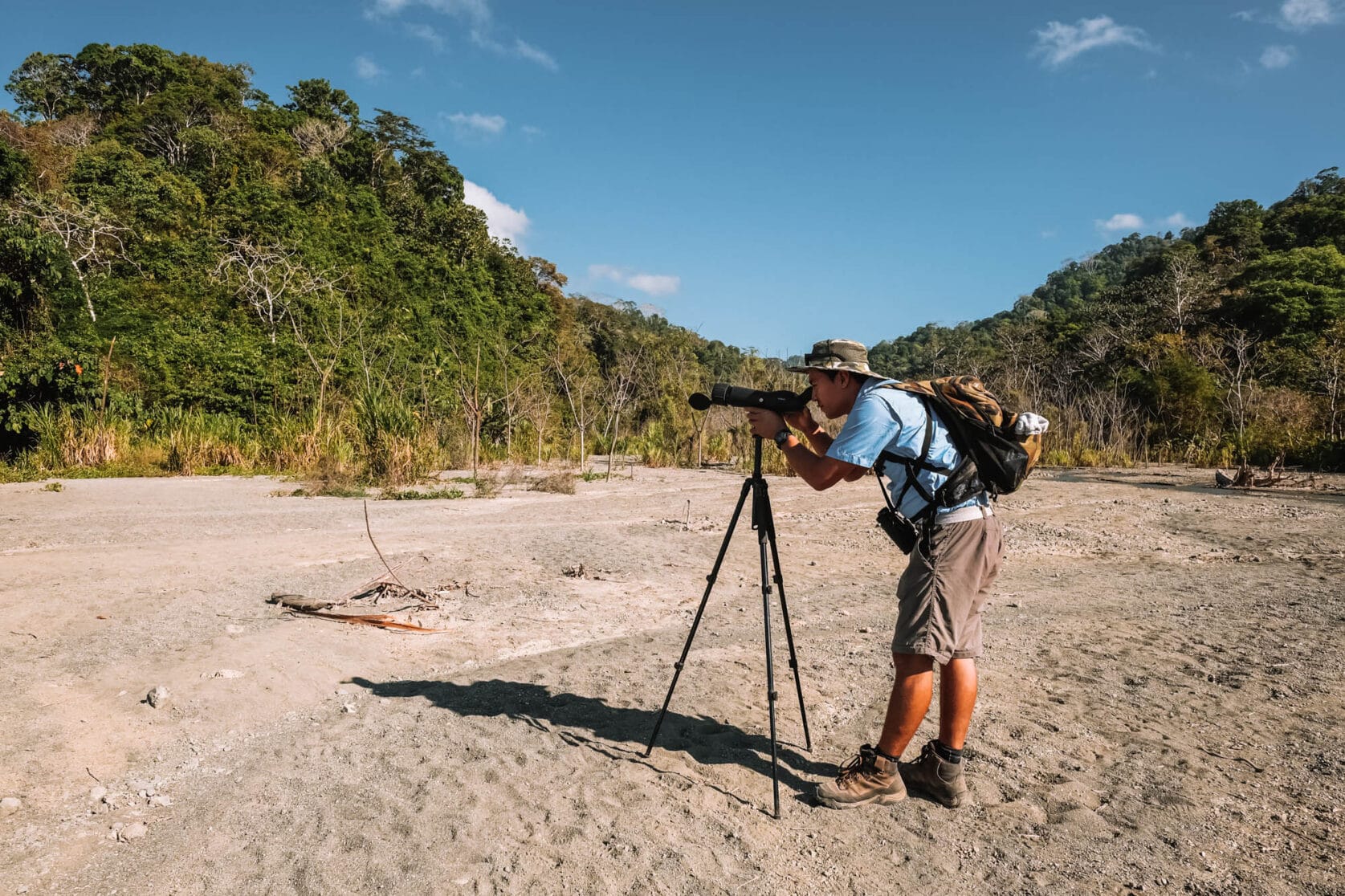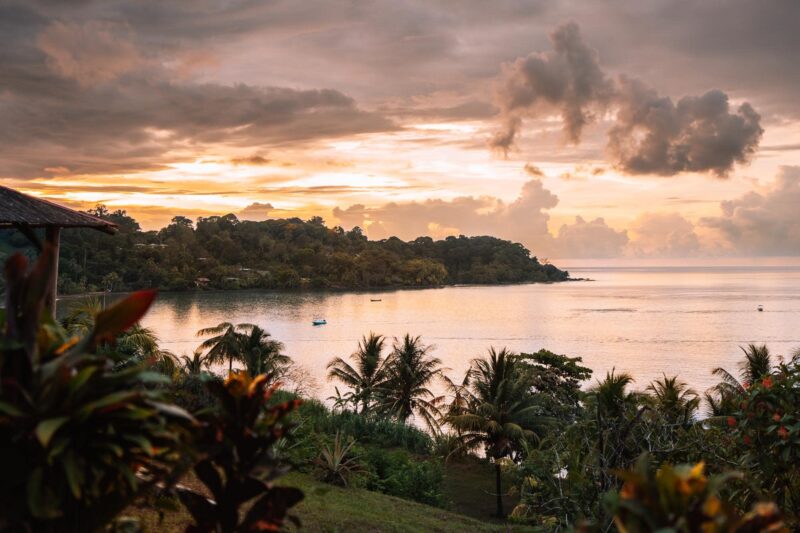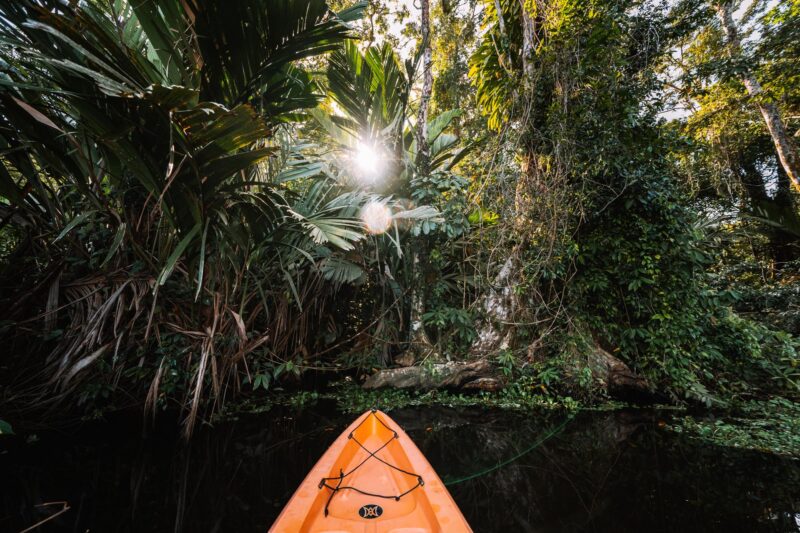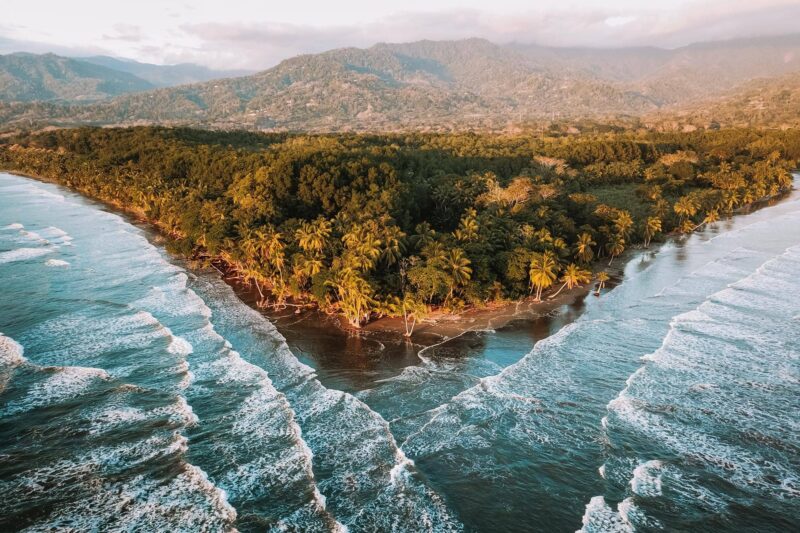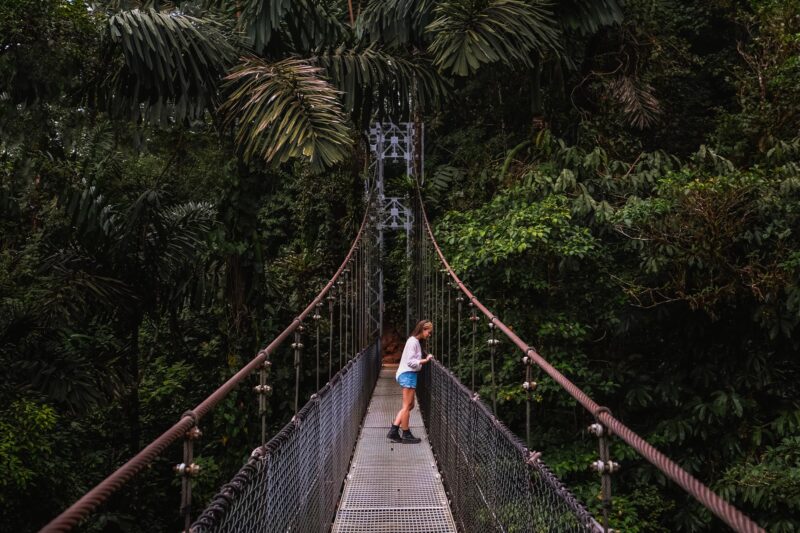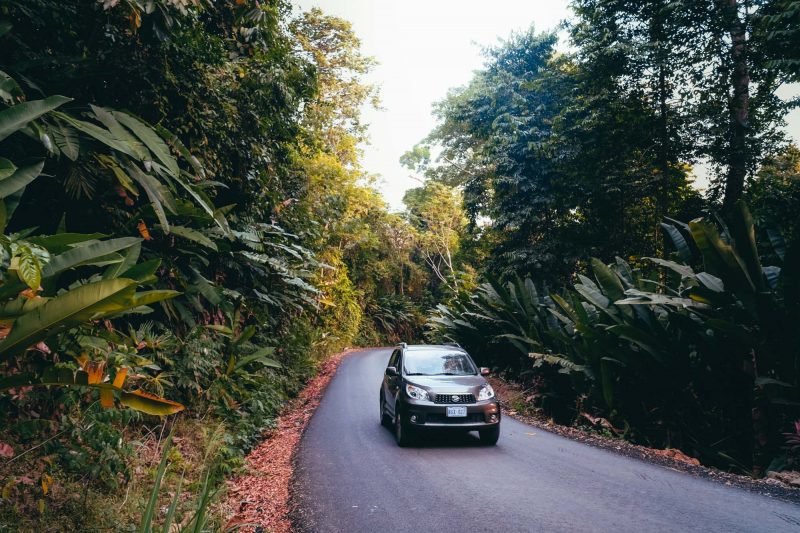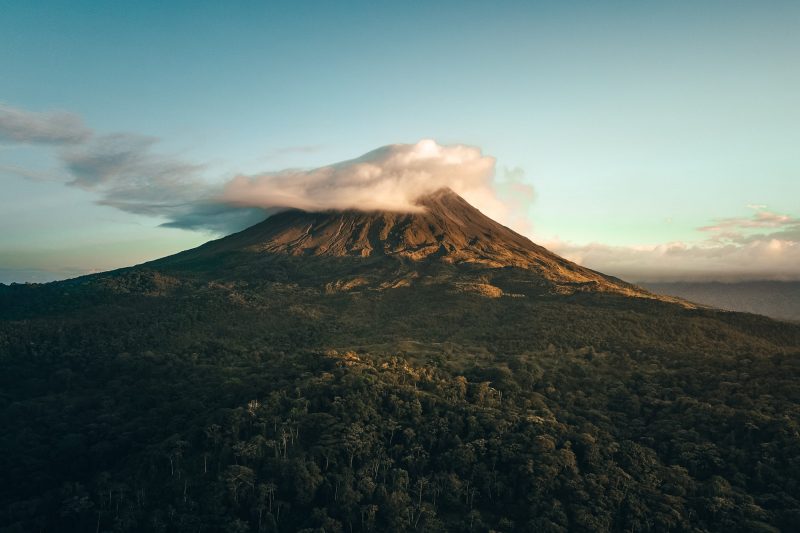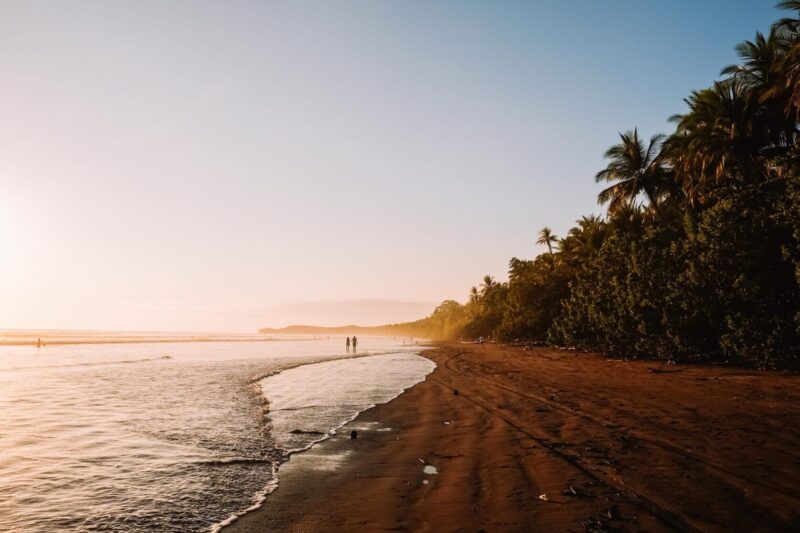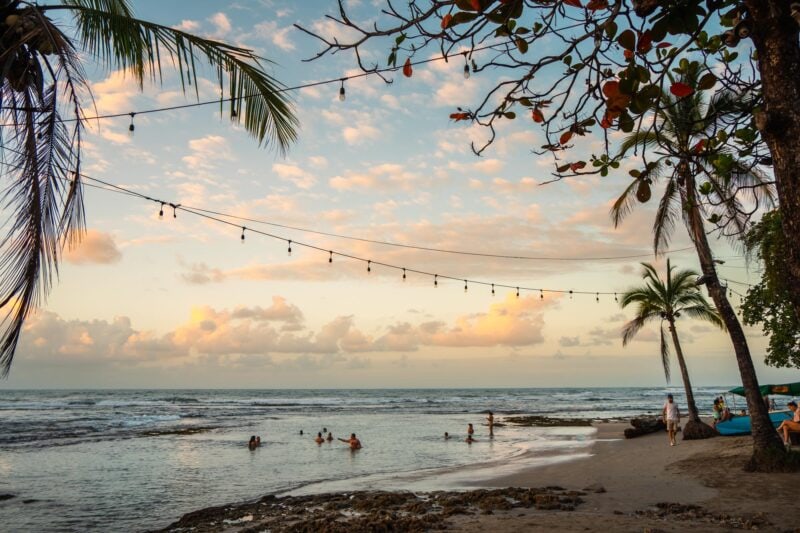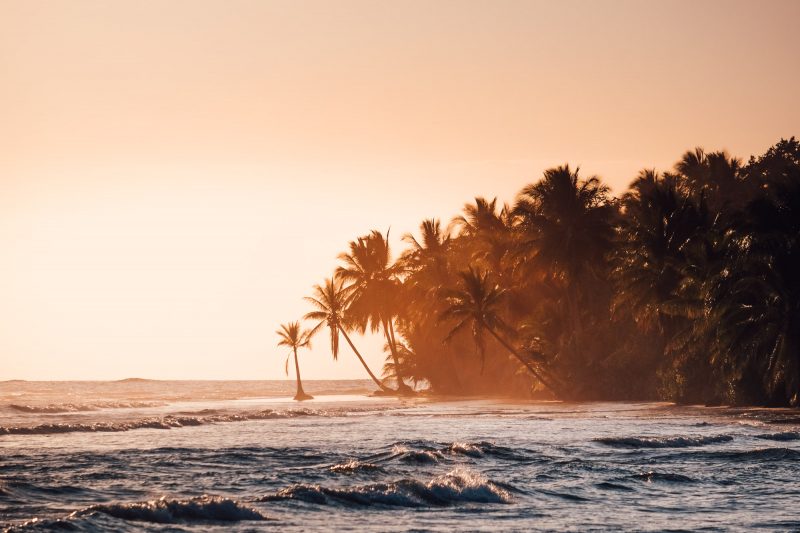Corcovado National Park in Costa Rica is an essential destination for nature enthusiasts and adventurers. Are you coming to Costa Rica to witness its lush nature and rich wildlife? While there are plenty of beautiful places to visit, Corcovado stands head and shoulders above the rest. With its abundant fauna and secluded beaches, it’s a true paradise for those seeking an unforgettable nature experience. A visit to Corcovado National Park requires some planning due to various rules and options. There are multiple gateways, and entrances, and the choice between a day tour or a multi-day tour. In this piece, I share all the tips to make choosing a visit to Corcovado National Park as easy as possible.
What Makes Corcovado National Park Unique?
Corcovado National Park is one of the most biodiverse places on Earth. The park houses a staggering 2.5% of the world’s biodiversity, including over 500 tree species, 140 mammal species, more than 400 bird species, and over 100 amphibian and reptile species. The park is also home to many endangered animals such as jaguars, pumas, tapirs, and Central American squirrel monkeys.
Due to Corcovado National Park’s remote location at the southern tip of Costa Rica, its pristine beauty and biodiversity have been preserved. This is also due to its relative inaccessibility, as visits to the park must be guided, and there’s a limited number of visitors allowed per day at each ranger station. These unique features have made it a popular destination for ecotourism. Visitors can book day tours or multi-day tours to witness the diverse wildlife and ecosystems during hikes through the park.
As with all wildlife destinations, specific animal sightings are not guaranteed. You might be fortunate enough to encounter a puma or mainly spot smaller animals.

Choosing a Base for Corcovado National Park
Corcovado National Park is located on the Osa Peninsula in southern Costa Rica. There are various places to choose as a base when visiting Corcovado National Park. Below, you can read about the differences between these base options.
Drake Bay as a Base
The most beautiful place and our favorite base for Corcovado National Park is Drake Bay. While it may be a bit more challenging to reach, this paradise-like spot is definitely worth a visit. From here, you can explore Corcovado National Park, as well as engage in numerous other exciting activities, including the snorkeling tour to Isla Caño. This makes Drake Bay not only a base but also an exciting destination on your journey. You can access all Corcovado entrances from here. Depending on the entrance you choose, you’ll travel by boat or 4×4 to the entrance. You can read more about it further below. Check out all the tips for Drake Bay and be convinced to head there.
Although Drake Bay is now reachable by car, the roads may not always be passable after rainfall, especially without a 4×4. You can ask your hotel about the road conditions at the time, but it’s easier to park your car in Sierpe and take a boat to Drake Bay from there. The boat departs twice a day and takes about 1.5 hours. You can buy tickets online, but it’s cheaper on-site. At the port, you can safely park your car for a few dollars per day. A significant part of the journey passes through beautiful mangrove forests, but there’s also a stretch over the sea, which can be a bit bumpy. For this reason, it’s best to take a seat at the back of the boat.
Sierpe / Palma Sur as a Base
If you don’t have enough time to visit Drake Bay, you can also take a day tour to Corcovado National Park from Sierpe or the nearby Palma Sur. This is the village from where the boat departs to Drake Bay. If you love animals, local experiences, and don’t mind going back to basics, it’s great to stay a few nights at La Muñequita Lodge. Here, you’ll sleep on a typical Costa Rican farm surrounded by chickens, goats, and cows. The owners are incredibly hospitable and love to share insights about Costa Rican culture and nature. There are two different floors in the house, so if the above option isn’t available, you can check out the other one here.
Puerto Jimenez as a Base
Lastly, you can also drive all the way to the town of Puerto Jimenez. This is located 2 hours further south from Sierpe. From here, you can also plan a tour to Corcovado National Park, but this place can’t be compared to the beauty you’ll find in Drake Bay. You visit this place solely as a base for Corcovado, unlike Drake Bay where you can do even more exciting things.
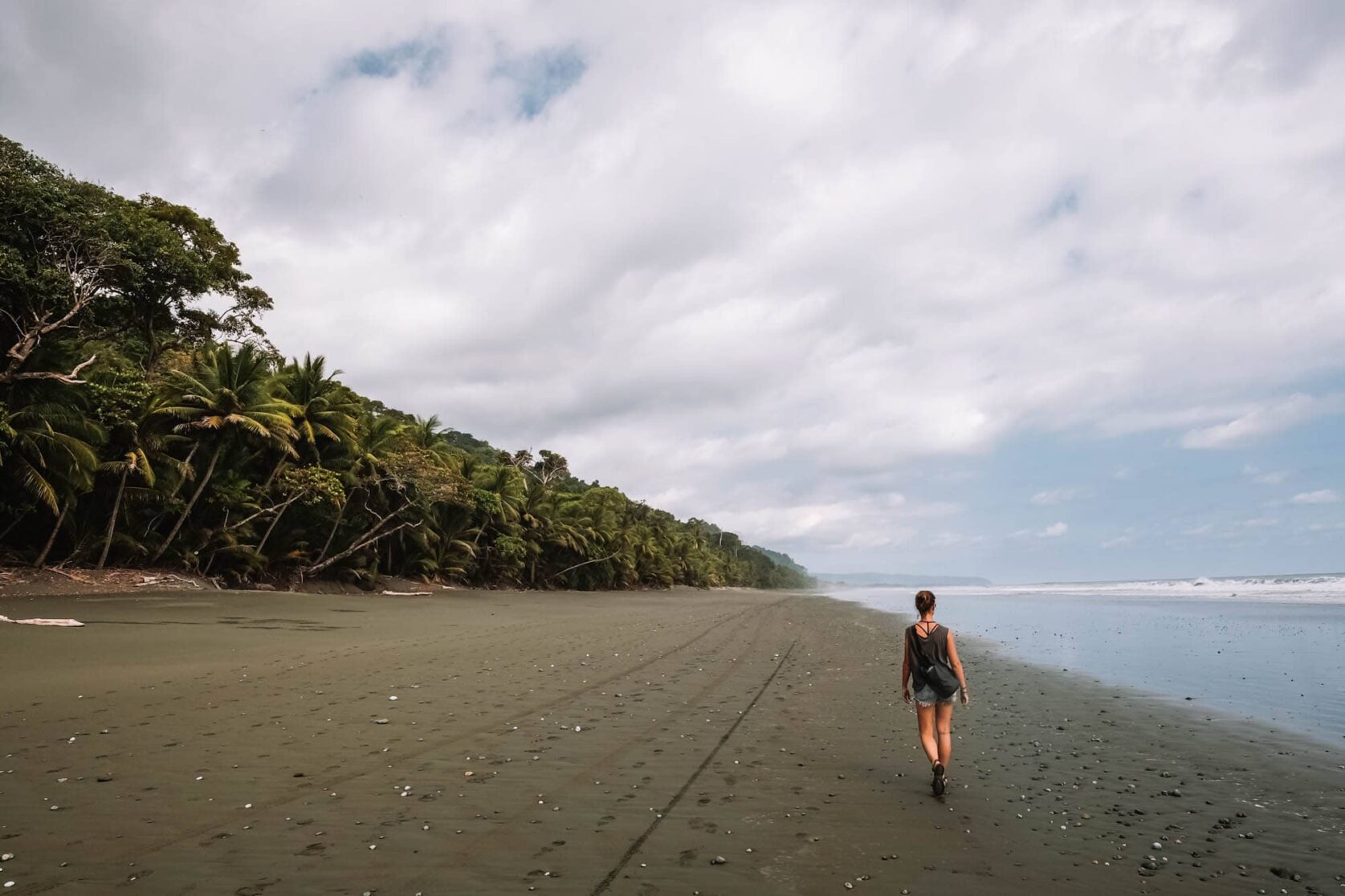
The Different Entrances and Ranger Stations in Corcovado National Park
You can enter Corcovado National Park at various points for a day tour or multi-day tour. This is always done through ranger stations, which are posts with facilities that monitor the number of people entering the park, among other things. There are five ranger stations spread across the park. During a multi-day tour, you’ll visit different ranger stations, while with a day tour, you need to choose which ranger station to enter through and which area to explore.
Note: The first three ranger stations are recommended for both day and multi-day tours. The last three are not as recommended. They are sometimes used in combination with the first three.
Ranger Station Sirena
Due to its central location, Sirena is the park’s main hub. It offers various hiking trails and the best opportunities to spot wildlife, including the rare tapir. This area is situated between two rivers, which keeps the animals largely confined to the area. Also, there are few predators, and because the animals are accustomed to humans in this area, they are quite easy to spot. During a tour, you’ll mainly walk along the coastal jungle. All these factors make Sirena the most popular ranger station, and tours should be booked many weeks in advance. You can read more about this below.

Ranger Station San Pedrillo
This ranger station is located on the northern edge of Corcovado National Park and is often visited in combination with Sirena during multi-day tours. Here, you’ll encounter many animals, and there’s even a chance of encountering predators like pumas, snakes, and hawks. Due to the presence of these predators, other animals might be less visible here. Similar to Sirena, you’ll mainly walk along the coast, and it’s a good spot for bird watching.
Ranger Station Los Planes
Opting for Los Planes provides you with the ultimate jungle experience, as it features the most pristine jungle in Corcovado National Park. It borders the San Pedrillo area and consists mainly of primary old-growth forest with trees thousands of years old. It’s the habitat of the jaguar, which is unfortunately difficult to spot. You might come across some wild animals, but the focus here is on the adventurous jungle experience. It offers an ultimate ‘off-the-beaten-path’ experience where you won’t encounter other people. You’ll delve deep into the jungle, spot tropical birds, and discover stunning waterfalls. Unlike the coast, you won’t be walking along the coast but directly through the jungle. This makes the hike a bit more challenging.
Ranger Station La Leona
This spot is located on the south side of Corcovado National Park and provides access to remote beaches and coastal paths. Here, you’ll walk on paths that run between the beach and the jungle. You’ll cover a significant stretch along the beach without shelter, which can be quite challenging on hot days.
Ranger Station Los Patos
This serves mainly as the overland gateway to Sirena. There are no hiking trails in this area, and the landscape consists mainly of grassland. During the rainy season, the road to Sirena is often closed due to becoming too muddy and impassable. As a result, very few or no tours are done in this area.
Ranger Station El Tigre
This ranger station is sometimes open and sometimes closed. In the meantime, the nature here has been severely impacted by illegal gold miners, so not many tours go here anymore.
Choosing Between a Day Tour or Multi-Day Tour in Corcovado National Park
A visit to Corcovado can be quite expensive, and it’s wise to book your tour at least two months in advance to have a choice of all ranger stations. This is because you can only visit Corcovado National Park with a guide, and there’s a limited number of people allowed to enter the park per ranger station each day. Especially the day tour to Sirena is popular and often fully booked about 6 weeks in advance.
Day Tour through Corcovado National Park
With a day tour, you start at one of the ranger stations and set out to explore wildlife with your guide. You’ll hike through the park for about 8 hours, and the guide always carries a good pair of binoculars with a tripod. This is a great option if you don’t necessarily want to hike for several days and/or if you don’t want to spend hundreds of dollars. The following tours are all provided by the same organization that I’ve personally used and can recommend. You can find out which tour I prefer further below.
- Day Tour Corcovado from Drake Bay to Ranger Station Los Planes
- Day Tour Corcovado from Drake Bay to Ranger Station Sirena
- Day Tour Corcovado from Drake Bay to Ranger Station San Pedrillo
- Day Tour Corcovado from Sierpe to Ranger Station San Pedrillo
Multi-Day Tour through Corcovado National Park
If you have more time and budget and enjoy hiking for several days, you can go for the complete experience by booking a tour with one or two overnight stays. You’ll sleep in a large, neat dormitory with bunk beds and your own mosquito net. With a multi-day tour, you’ll venture deeper and spend more time in the jungle, sometimes visiting different ranger stations. This increases your chances of spotting animals and truly experiencing the jungle.
This unique experience does come with a significant cost. Staying at a ranger station costs around $30 per person, and since you’re not allowed to bring food into the park, you’ll depend on the meals offered at the ranger station, which are about $25 per meal. This is separate from the costs of the tour itself. All in all, for a multi-day tour, you could easily spend $470 or more. Some tours opt to stay just outside Corcovado National Park to keep costs down. For example, in the two-day tour below, you’ll sleep in a lodge on the park’s edge, and both accommodation and meals are included in the price.
- Two-day Corcovado tour from Drake Bay to ranger stations Sirena and San Pedrillo
Which Tour Should You Choose?
If your main goal is to spot as much wildlife as possible, I recommend booking a tour to Sirena (in advance). If you’re short on time and budget, a day tour to Sirena is a great option. The trails are easy to navigate and are suitable for children as well. If you have a bit more time and budget and you’re mainly interested in wildlife, then I’d recommend the two-day tour to Sirena and San Pedrillo. It involves more hiking, and the trails can be a bit more challenging. However, immersing yourself fully in nature is truly rewarding. Waking up to the sounds of the jungle after a night’s sleep and heading out early when the wildlife is most active is delightful.
If an adventurous hike through ancient primary forest sounds appealing to you, then the day tour to Los Planes is my absolute favorite in Corcovado National Park. During this tour, you’ll venture off the beaten path, cross rivers on fallen tree trunks, and swim in hidden waterfalls. After seeing many animals in other places, I decided to choose this adventure, and what a fantastic experience it was! I’ve been on many hikes, but this was truly a unique experience.
During the day tour to Los Planes, you’ll cover around 18 kilometers through the wild nature of Costa Rica. You’ll enter the primary forest with trees thousands of years old. As you navigate through this jungle, you’ll witness the nature changing before your eyes. The trail is stunning, sometimes running along, through, or over a river. You might balance on a several-meter-long tree trunk to cross a river, and then climb down a steep hill using ropes. After all that intense effort, taking a refreshing dip in the waterfall is a delightful moment.
It was made clear beforehand that this is a challenging hike, and that’s no exaggeration. Negative reviews mostly come from those who underestimated the tour. However, if you have some fitness and enjoy a challenge, it’s manageable and quite an amazing adventure. This tour isn’t solely focused on spotting wildlife. If you do come across some, it’s a bonus, but it’s mainly about truly experiencing the deep jungle of Corcovado National Park.
Packing List for a Visit to Corcovado National Park
To start your tour of Corcovado National Park well-prepared, I recommend packing and taking the following items with you:
- Durable hiking boots
- Rain jacket or poncho
- Hat or cap for sun protection
- Refillable water bottle
- Insect repellent
- Sunscreen
- Towel
- Camera or phone
- Waterproof pouch for your electronics
- Binoculars
Our Favorite Places to Stay in Drake Bay (Base for Corcovado)
Nestled in nature is the unique Sunset Lodge. You’ll stay in a bungalow with ample privacy, a private veranda, and an awesome ocean view. The bungalows are surrounded by greenery, allowing you to spot birds, monkeys, and other animals from your veranda. It’s situated slightly uphill, so there’s a short climb from Drake Bay, but you’ll still be close to all the restaurants. At Jacamar Corcovado Drake Bay, you can expect a bit more comfort. You’ll stay in a spacious double room with air conditioning, a refrigerator, a comfortable bed, and a good shower. Here too, you have a private balcony with views of nature and opportunities to spot wildlife. Casa Jade is the best budget option in Drake Bay. You can stay in a double room for as little as twenty or thirty dollars. The rooms are simple but have everything you need. The owner and staff are incredibly friendly and welcoming.
 Sunset Lodge Sunset Lodge |
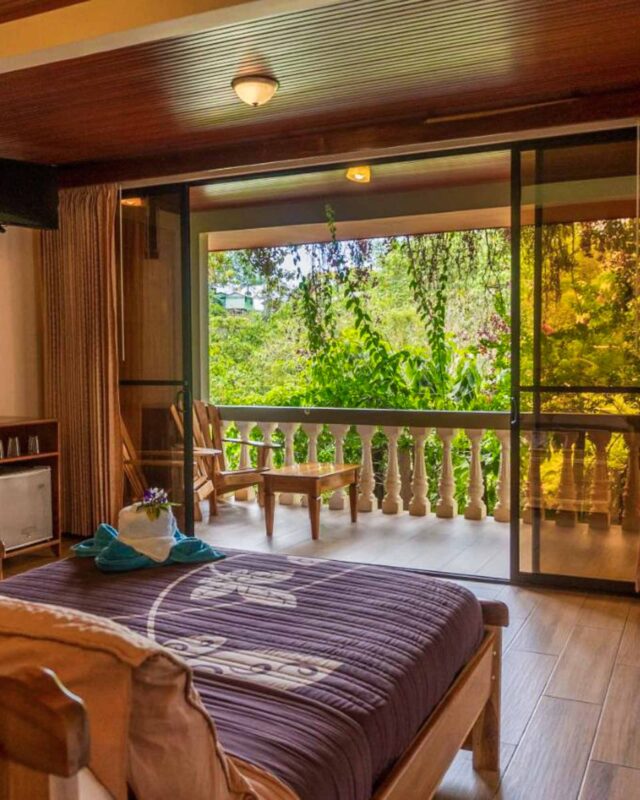 Jacamar Corcovado Drake Bay Jacamar Corcovado Drake Bay |
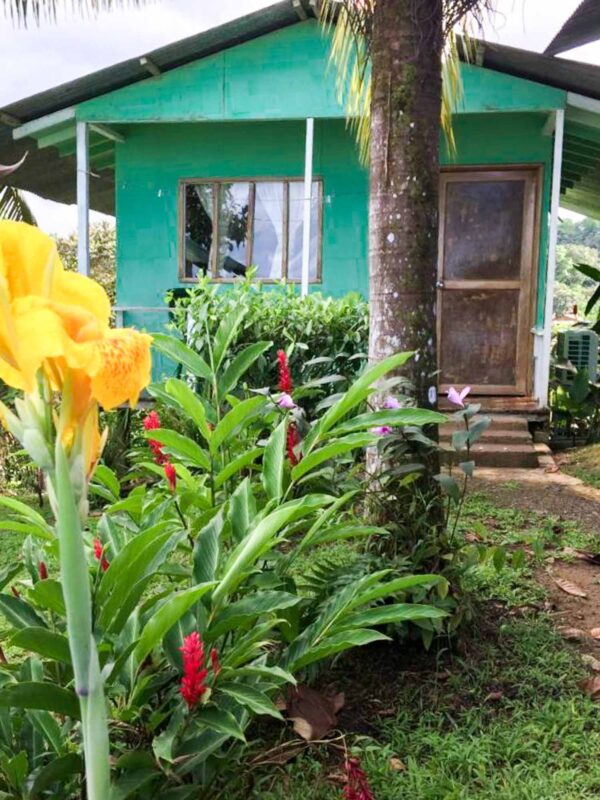 Casa Jade Casa Jade |
